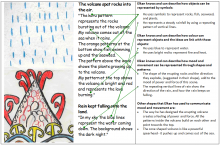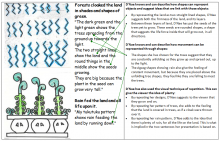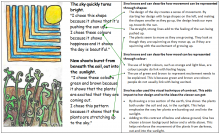Paikea
This task is about interpreting the effect of visual techniques.
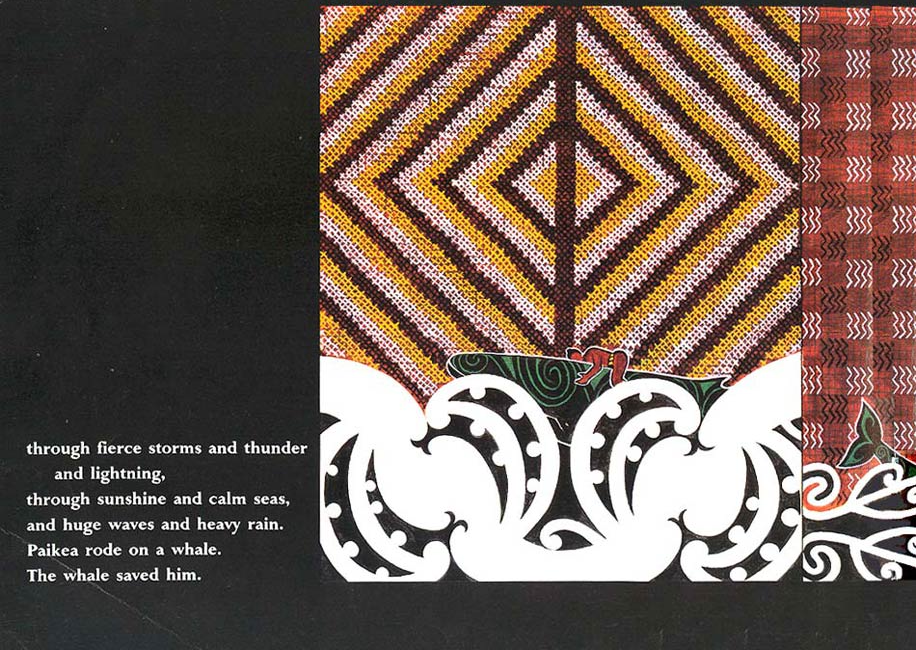
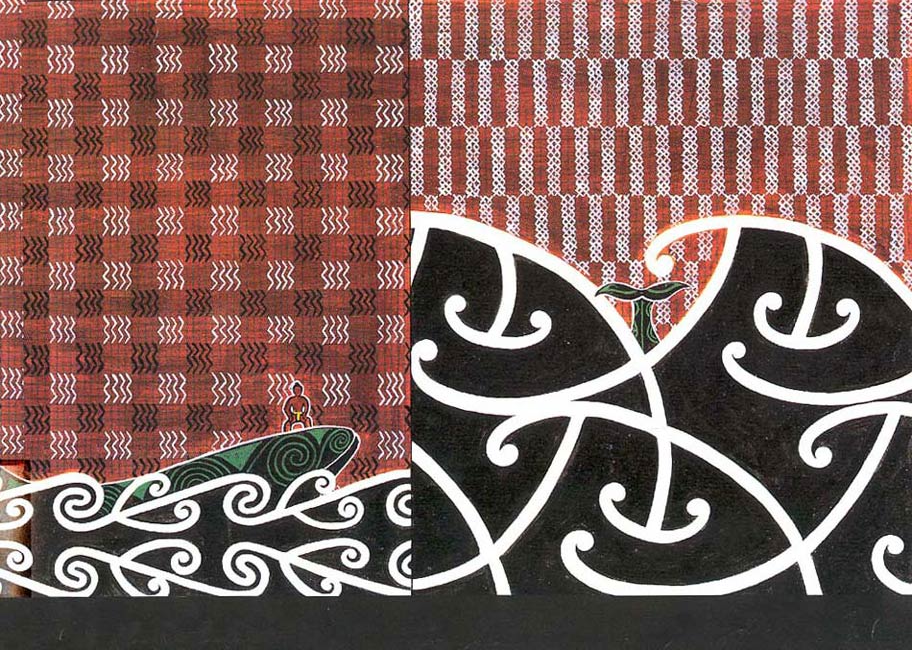
Part 1 The purpose of this task is to identify visual techniques and describe how they add meaning to a poem.
The tukutuku patterns below come from the book 'Paikea' by Robyn Kahukiwa.
| a) |
This tukutuku pattern suggests thunder and lightning.
Describe two ways it does this:
|
 |
|
|
1.
|
|
||
| 2. |
|
||
| b) |
This tukutuku pattern suggests sunshine and a calm day.
Describe two ways it does this:
|
 |
|
|
1.
|
|
||
| 2. |
|
||
| c) |
The illustration makes us feel trapped.
How does it do this?
Describe two ways it does this:
|
 |
|
|
1.
|
|
||
| 2. |
|
||
The words and kowhaiwhai patterns below come from the same book.
|
Paikea rode through fierce storms and
thunder and lightning,
 |
through sunshine and
calm seas,
 |
and huge waves and heavy rain.
 |
d) Describe two ways the artist has changed the kowhaiwhai designs to show the changes in the weather and the seas.
|
1.
|
|
| 2. |
|
e) How does the middle design show that the sea is calm? Explain two ways it shows the sea is calm.
|
1.
|
|
| 2. |
|
Part 2
The purpose of this task is to use the visual techniques explored in Part 1 to communicate new ideas, and to explain how you have done this.
1. Your task is to draw a design that illustrates a sentence about the sky (using tukutuku patterns), and a sentence about the land or the sea (using kowhaiwhai patterns).
2. You can use the sentences in the box below, or write your own pair in the space.
| Land or sea sentences | Sky sentences |
| From deep within, the earth rumbled. The volcano spat rocks into the air. | The sky burst into fire. |
| Forests cloaked the land in shades and shapes of green. | Rain fed the land and all life upon it. |
| The sea swarmed with life. | Birds flocked and filled the sky. |
| New shoots burst from beneath the soil, out into the sunlight. | The sun beamed down, welcoming the new life. |
| The waves clashed, each one trying to dominate the other. | Clouds gathered, hanging menacingly close to the raging seas. |
|
|
|
|
|
|
|
|
3. Choose a pair of sentences. Think about the shapes, colours and movement that would best illustrate each sentence, and how you could put them together visually.
4. Use the following planning and self-assessment table to help you.
|
Write your sky sentence:
|
Draw a plan of your sky's tukutuku pattern:
|
When you have finished, explain how your design shows the idea and mood in your sentence:
|
|
Write your land or sea sentence:
|
Draw a plan of your land or sea's pattern:
|
When you have finished, explain how your design shows the idea and mood in your sentence:
|
|
Feedback from someone in your class
Impact: How well are the visual techniques combined to communicate an idea and mood?
Concept: How clear are the written explanations of the visual techniques?
What other ideas are shown in this presentation, and how you would explain them:
Signed: ________________________________ |
||


